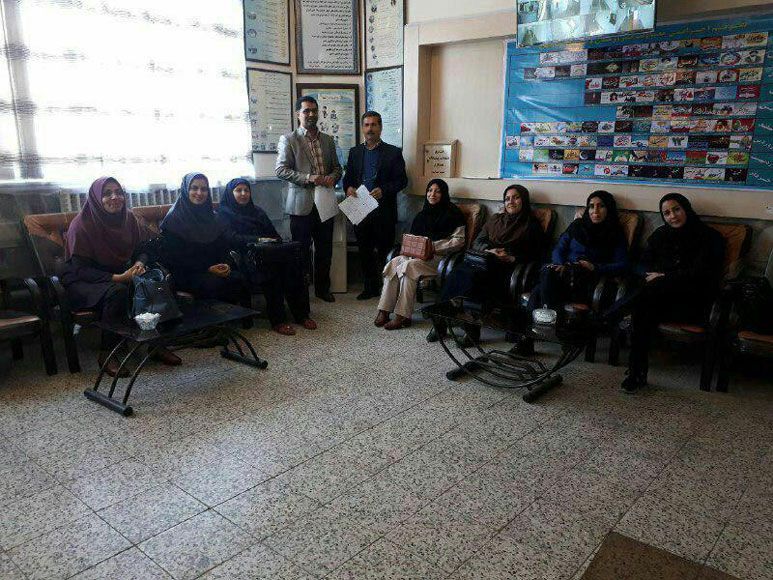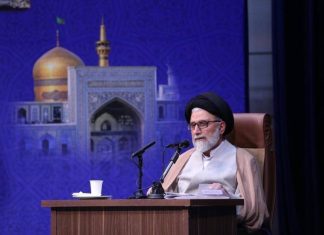Last week saw the largest ever nationwide strike by teachers in Iran. Tens of thousands of teachers marched in some 100 cities across Iran, demanding their rights as articulated by the Iranian Teachers’ Trade Association (ITTA). Riot police and security forces brutalized strikers and arrested at least three teachers in several cities.
The primary demand of teachers is for the government to implement the “Teachers’ Pay Structure Act,” which, if enforced, would raise teachers’ salaries. While the protests by teachers did prompt the Majlis (Iranian Parliament) to pass the Teachers’ Pay Structure Act, union activists argue that the salary increase was “cursory” and, therefore, that the “teachers’ strike will continue.”
Iranian teachers staged several protests earlier in the year demanding the passage of the Teachers’ Pay Structure Act. The protests became widespread at the start of the school year (Sept. 18), sparking the most extensive work stoppage ever by Iranian teachers. Responding to a call by the Coordination Council of Iranian Cultural Associations, tens of thousands of teachers staged sit-ins at schools across the country on Dec. 11 and 12.
The Coordination Council of Iranian Cultural Associations issued an ultimatum to the Majlis on Dec. 11, warning that the nationwide teachers’ protests would continue if the Majlis did not pass the Teachers’ Pay Structure Act. After the Majlis failed to pass the bill, teachers poured into streets in some100 cities across the country, condemning the government for not meeting their demands.
The Islamic Republic ignored the demands of the teachers’ union and brutalized the striking teachers — just three weeks after its violent crackdown on protests over water shortages in Isfahan, capital of the central province of Isfahan.
Authorities arrested at least three teachers, including Rasoul Bedaghi, a member of the central committee of the Teachers’ Trade Association of Eslamshahr in the northern province of Tehran.
Footage posted on social media allegedly showed law enforcement forces special units beating up striking teachers outside the Majlis. Antiriot police and security units allegedly threatened striking teachers in other cities, including Kerman (southeast) and Tabriz (northwest).
A striking teacher in Isfahan held a placard, saying that one of their students was allegedly hit and blinded by a police bullet. The handwritten placard bears witness to the bloody nature of the crackdown against protesters in Isfahan.
On Nov. 29, Iranian security forces, antiriot units, plainclothes police, and the Basij (volunteer militia) crushed a massive protest by farmers and people from all walks of life in Isfahan, injuring many and arresting scores of others. The protest, which began three weeks earlier, was led by farmers over authorities’ mismanagement of local water resources and seasonal water rights, particularly in the fall.
Footage posted on social media showed security forces using batons, tear gas, water cannon, air rifles (powered air pistols, air guns), and paintball guns to disperse the protesters. According to several human rights organizations, at least 19 people suffered eye injuries caused by pellet guns, including several teenagers.
Security forces, antiriot police, and plainclothes Judiciary agents attacked and injured many striking teachers, whose principal and lawful demands included the enforcement of the “Teachers’ Pay Structure Act,” the “Retired Teacher’s Pension Restructuring Act,” and the “release of imprisoned teachers.”
The average monthly salary of teachers in Iran is between $179 and $214 to $250 for those with Masters or doctorate degrees. Enforcing the Teachers’ Pay Structure Act would increase the average monthly salary of teachers to $350.
According to recent data, the average monthly income for an Iranian household living at or just below the poverty line is around $429. The recent ratification of the Teachers’ Pay Structure Act by the Majlis will not improve the living standards of teachers. The bill will not go into effect until the start of the new Iranian year on March 21, 2022.
Meanwhile, hyperinflation and the high cost of living are pushing more segments of Iranian society into poverty. Even with the recent pay rise approved by the Majlis, teachers’ salaries will fall short of the increase in the cost-of-living index. The bill on the restructuring pay scale of teachers was part of a broader “Civil Service Management Act,” ratified in 2007.
Under the Civil Service Management Act, employees’ salaries in various sectors must be adjusted based on each category’s skill, experience, and pay scale. For instance, teachers employed by the Ministry of Education and university professors working for the Ministry of Science, Research, and Technology must be part of the same grade and pay structure. Under this system, teachers’ salaries must amount to 80 percent of the salaries of university faculties.
Teachers have been waiting for the law to go into effect since 2007. Although the Majlis passed the bill during Mr. Mahmoud Ahmadinejad’s presidency (in office from 2005 to 2013), it never went into effect. President Hassan Rouhani (in office from 2013 to 2021) and his cabinet revisited the issue but took no meaningful steps to increase teachers’ salaries. It was more like a populist election campaign promise.
During its last months in power, Mr. Rouhani’s government submitted the Teachers’ Pay Structure Act to the Majlis, but the parliament ignored the proposal. The new Iranian President Ebrahim Raisi and his government have not changed the status quo, triggering a nationwide protest by teachers.
Mahmoud Beheshti Langeroudi, the deputy chairperson of the Coordination Council of Iranian Cultural Associations, recently said: “The new government, and the Majlis promised to pass the bill. Given the current [government] budget and the prevailing contractionary [monetary] policy, it was not possible to include the proposed figure for the [pay] scale (which would cost $893 million for the last six months of the year [Oct. 2, 2021, to March 21, 2022]). However, teachers are justified in demanding their rights.”
Iran Parliament Debates Wage Hike for Teachers Holding Nationwide Strike
Although the Majlis passed the bill two days after the teachers held a nationwide strike, it has not clarified when and how the government will enforce the new law. Teachers argue that the bill’s passage was a “cursory and empty gesture” by the Majlis.
On the same day that the Majlis passed the bill, Mohammad Habibi, spokesperson for the Iranian Teachers’ Trade Association (ITTA), tweeted: “What happened in the Majlis today was not [passing] a bill on structuring salaries but a superficial gesture.”
“Teachers and the unions do not support this bill. Teachers will continue to protest until the government meets their rightful demands,” Mr. Habibi added.
The Coordination Council of Iranian Cultural Associations also released a statement, calling the bill “ambiguous and insufficient.”
On Dec. 16, hundreds of teachers staged a protest in Hamedan, capital of the western province of Hamedan, against the “superficial” bill passed by the Majlis. They also called for the release of all imprisoned teachers.
Although teachers continue to protest in Hamedan and other cities, state media and news websites, including the Islamic Republic of Iran Broadcasting (IRIB), have claimed that the teachers’ strike has ended.
[aesop_image img=”https://kayhanlife.com/wp-content/uploads/2021/12/797M.jpeg” panorama=”off” credit=”By Behnam Mohammadi. ” align=”center” lightbox=”off” captionsrc=”custom” caption=”Teachers Protest in Iran. KL./” captionposition=”left” revealfx=”off” overlay_revealfx=”off”]






